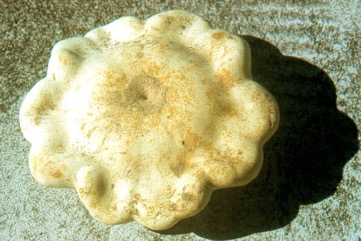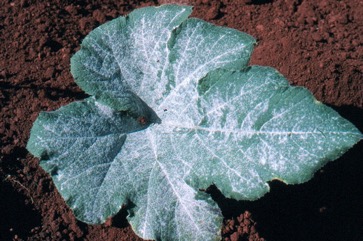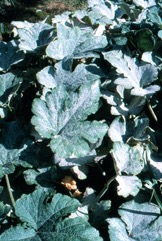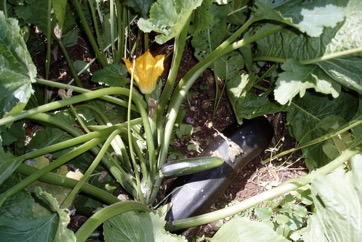Marrow, Pumpkin

A subtropical plant. They are more suited to drier areas. They are frost sensitive. It grows best with day temperatures between 24-29°C and night temperatures of 16-24°C. It suits tropical highland regions. In PNG it is best between 1,000 and 2,000 m above sea level. It suits hardiness zones 8-11.
Also known as:
Abobora, Acorn squash, Aguzi, Akatewa, Amathanga, Apala, Ashkabak, Baanke, Babaka, Bonghom, Bovora, Bu-thakwa, Calabaza, Courgette, Elegede, Fan kwa, Ithanga, Iuhnawo, Kabewa goji, Kaddhu, Kohora, Kumra, Kundir, Kurkaru, Loah, muBovora, Maximara, Minhanga, Obwogulu, Okono, Papukena, Paukena, Pharsi, Pokin, Safedkaddu, Sakriboate, Sakribonte, Sari kabak, Spaghetti squash, Suraikayi, Te bamkin, Te bangketi, Ugbogulu, Ukoro, Vegetable spaghetti, Wavukeni, Zucchini
Edible Portion
- Fruit, Seeds, Leaves, Vegetable, Flowers
Where does Marrow grow?
Found in: Africa, Angola, Argentina, Asia, Australia, Bangladesh, Benin, Botswana, Brazil, Burkina Faso, Burundi, Cameroon, Caucasus, Central Africa, Central African Republic, CAR, Central America, Chad, China, Colombia, Comoros, Congo, Cook Islands, Costa Rica, Côte d'Ivoire, Cuba, Dominican Republic, East Africa, East Timor, Ecuador, Equatorial-Guinea, Eritrea, Ethiopia, Fiji, FSM, Gabon, Gambia, Georgia, Ghana, Guam, Haiti, Hawaii, Himalayas, Honduras, India, Indochina, Indonesia, Ivory Coast, Kenya, Kiribati, Korea, Kyrgyzstan, Liberia, Lithuania, Madagascar, Malawi, Malaysia, Mali, Marquesas, Marshall Islands, Mauritania, Mauritius, Mediterranean, Mexico, Moldova, Myanmar, Namibia, Nauru, Nepal, New Caledonia, Niger, Nigeria, North America, Northeastern India, Pacific, Papua New Guinea, PNG, Paraguay, Peru, Philippines, Pohnpei, Rotuma, Rwanda, SE Asia, Senegal, Serbia, Seychelles, Sierra Leone, Solomon Islands, Somalia, South Africa, Southern Africa, South America, Sri Lanka, St Helena, Sudan, Tanzania, Tasmania, Thailand, Timor-Leste, Togo, Tonga, Turkey, Uganda, United States, Vanuatu, Vietnam, West Africa, West Indies, Zambia, Zimbabwe
Notes: There are 25 Cucurbita species.
Status: It is a commercially cultivated vegetable. Not widely distributed in Papua New Guinea. Not as common as pumpkins.
Growing Marrow, Pumpkin
Cultivation: They are grown from seeds. The seeds germinate after one week. They can be grown from cuttings. They are best planted on mounds. A spacing of 2-3 m between plants is needed. Hand pollination assists fruit setting. Plants can also be grown from cuttings as plants root at the nodes.
Edible Uses: The young fruit are cooked and eaten. They can be steamed, boiled or fried. They are used in pies, soups, stews and cakes. The young leaves and the ripe seeds can also be eaten cooked. The seeds are dried, salted and toasted and eaten as a snack food. The seeds can also be pressed to produce oil. The sprouted seeds are used in salads. Flowers and flower buds can be eaten boiled. They can be dried for later use.
Production: The first usable immature fruit are ready 7-8 weeks after planting.
Nutrition Info
per 100g edible portion| Edible Part | Energy (kcal) | Protein (g) | Iron (mg) | Vitamin A (ug) | Vitamin c (mg) | Zinc (mg) | % Water |
|---|---|---|---|---|---|---|---|
| - | - | - | - | - | - |
Marrow, Pumpkin Photos





References
Abbiw, D.K., 1990, Useful Plants of Ghana. West African uses of wild and cultivated plants. Intermediate Technology Publications and the Royal Botanic Gardens, Kew. p 40
Achigan-Dako, E, et al (Eds), 2009, Catalogue of Traditional Vegetables in Benin. International Foundation for Science.
Ali, A. M. S., 2005, Homegardens in Smallholder Farming Systems: Examples from Bangladesh. Human Ecology, Vol. 33, No. 2 pp. 245-270
Ambasta, S.P. (Ed.), 2000, The Useful Plants of India. CSIR India. p 149
Anderson, E. F., 1993, Plants and people of the Golden Triangle. Dioscorides Press. p 208
Ara, R. I. T., 2015, Leafy Vegetables in Bangladesh. Photon eBooks. p 126
Arellanes, Y., et al, 2013, Influence of traditional markets on plant management in the Tehuacan Valley. Journal of Ethnobiology and Ethnomedicine 9:38
Barrau, J., 1976, Subsistence Agriculture in Melanesia. Bernice P. Bishop Museu, Bulletin 219 Honolulu Hawaii. Kraus reprint. p 55
Beckstrom-Sternberg, Stephen M., and James A. Duke. "The Foodplant Database." http://probe.nalusda.gov:8300/cgi-bin/browse/foodplantdb.(ACEDB version 4.0 - data version July 1994)
Berihun, T. & Molla, E., 2017, Study on the Diversity and Use of Wild Edible Plants in Bullen District Northwest Ethiopia. Hindawi Journal of Botany. Article ID 8383468
Bernholt, H. et al, 2009, Plant species richness and diversity in urban and peri-urban gardens of Niamey, Niger. Agroforestry Systems 77:159-179
Bianchini, F., Corbetta, F., and Pistoia, M., 1975, Fruits of the Earth. Cassell. p 106
Bodkin, F., 1991, Encyclopedia Botanica. Cornstalk publishing, p 306
Bourke, R. M., Altitudinal limits of 230 economic crop species in Papua New Guinea. Terra australis 32.
Bourret, D., 1981, Bonnes-Plantes de Nouvelle-Caledonie et des Loyaute. ORSTOM. p 31
Bradacs, G., 2008, Ethnobotanical Survey and Biological Screening of Medicinal Plants from Vanuatu. PhD thesis Frankurt University. p 101
Bremness, L., 1994, Herbs. Collins Eyewitness Handbooks. Harper Collins. p 245
Brouk, B., 1975, Plants Consumed by Man. Academic Press, London. p 134
Burkill, H. M., 1985, The useful plants of west tropical Africa, Vol. 1. Kew.
Burkill, I.H., 1966, A Dictionary of the Economic Products of the Malay Peninsula. Ministry of Agriculture and Cooperatives, Kuala Lumpur, Malaysia. Vol 1 (A-H) p 709
Bussman, R. W., et al, 2016, A comparative ethnobotany of Khevsureti, Samtskhe-Javakheti, Tusheti, Svaneti, and Racha-Lechkhumi, Republic of Georgia (Sakartvelo), Caucasus. Journal of Ethnobiology and Ethnomedicine (2016) 12:4
Bussman, R. W. et al, 2017, Ethnobotany of Samtskhe-Javakheti, Sakartvelo (Republic of Georgia), Caucasus. Indian Journal of Traditional Knowledge Vol. 16(1) pp 7-24
Cheifetz, A., (ed), 1999, 500 popular vegetables, herbs, fruits and nuts for Australian Gardeners. Random House p 60
Chin, H. F., 1999, Malaysian Vegetables in Colour. Tropical Press. p 49
Cobley, L.S. (rev. Steele, W.M.) 2nd Ed., 1976, An Introduction to the Botany of Tropical Crops. Longmans. p 136
Cruz, I. M., et al, 2015, Edible fruits and seeds in the State of Mexico. Revista Mexicana de Ciencias Agricolas. Vol. 6. Num. 2 pp 331-346
Cundall, P., (ed.), 2004, Gardening Australia: flora: the gardener's bible. ABC Books. p 442
Dansi, A., et al, 2008, Traditional leafy vegetables and their use in the Benin Republic. Genet Resour Crop Evol (2008) 55:1239–1256
Duchelle, A. E., 2007, Observations on Natural Resource use and Conservation by the Shuar In Ecuador's Cordillera del Condor. Ethnobotany Research & Applications 5:005-023
Ertug, F., 2004, Wild Edible Plants of the Bodrum Area. (Mugla, Turkey). Turk. J. Bot. 28 (2004): 161-174
Ethnobotany of Karbis. Chapter 4 in p 83
Facciola, S., 1998, Cornucopia 2: a Source Book of Edible Plants. Kampong Publications, p 87
Farfan, B., et al, 2007, Mazahua Ethnobotany and Subsistence in the Monarch Butterfly Biosphere Reserve, Mexico. Economic Botany 61(2) 2007, pp 173-191
Flores, M. P., et al, 2007, Estudio Etnobotanico De Zapotitlan Salinas, Puebla, Acta Botanica Mexicana, Mexico. p 22
Flowerdew, B., 2000, Complete Fruit Book. Kyle Cathie Ltd., London. p 122
Fowler, D. G., 2007, Zambian Plants: Their Vernacular Names and Uses. Kew. p 22
Fox, F. W. & Young, M. E. N., 1982, Food from the Veld. Delta Books. p 174
French, B.R., 1986, Food Plants of Papua New Guinea, A Compendium. Asia Pacific Science Foundation p 103
French, B.R., 2010, Food Plants of Solomon Islands. A Compendium. Food Plants International Inc. p 135
Gouldstone, S., 1983, Growing your own Food-bearing Plants in Australia. Macmillan p 180
Grubben, G. J. H. and Denton, O. A. (eds), 2004, Plant Resources of Tropical Africa 2. Vegetables. PROTA, Wageningen, Netherlands. p 273
Gurdal, B. & Kultur, S., 2014, The edible and miscellaneous useful plants in Marmaris (Southwest Turkey). İstanbul Ecz. Fak. Derg. / J. Fac. Pharm. Istanbul 44(1) 2014 pp.69-78
Hadfield, J., 2001, The A-Z of Vegetable Gardening in South Africa. Struik p 119
Hedrick, U.P., 1919, (Ed.), Sturtevant's edible plants of the world. p 235
Hermandez Bermejo, J.E., and Leon, J. (Eds.), 1994, Neglected Crops. 1492 from a different perspective. FAO Plant Production and Protection Series No 26. FAO, Rome. p18, 67
High, C. & Shackleton, C. M., 2000, The comparative value of wild and domestic plants in home gardens of a South African rural village. Agroforestry Systems 48: 141–156, 2000
Hu, Shiu-ying, 2005, Food Plants of China. The Chinese University Press. p 702
Jardin, C., 1970, List of Foods Used In Africa, FAO Nutrition Information Document Series No 2.p 72
Joyce, D., 1998, The Garden Plant Selector. Ryland, Peters and Small. p 180
Kapelle, M., et al, 2000, Useful plants within a Campesino Community in a Costa Rican Montane Cloud Forest. Mountain Research and Development, 20(2): 162-171.
Kaya, O. M., et al, 2020, An ethnobotanical research in Sanhurfa central district and attached Villages (Turkey). Indian Journal of Traditional Knowledge. Vol. 19(1) pp 7-23
Kays, S. J., and Dias, J. C. S., 1995, Common Names of Commercially Cultivated Vegetables of the World in 15 languages. Economic Botany, Vol. 49, No. 2, pp. 115-152
Khanal, R., et al, 2014, Documenting abundance and use of underutilized plant species in the mid hill region of Nepal. ECOPRINT 21: 63-71, 2014
Kiple, K.F. & Ornelas, K.C., (eds), 2000, The Cambridge World History of Food. CUP p 1714, 1840
Larkcom, J., 1991, Oriental Vegetables, John Murray, London, p 81
Lazarides, M. & Hince, B., 1993, Handbook of Economic Plants of Australia, CSIRO. p 70
Lyle, S., 2006, Discovering fruit and nuts. Land Links. p 167
Macmillan, H.F. (Revised Barlow, H.S., et al) 1991, Tropical Planting and Gardening. Sixth edition. Malayan Nature Society. Kuala Lumpur. p 334, 371
Martin, F.W. & Ruberte, R.M., 1979, Edible Leaves of the Tropics. Antillian College Press, Mayaguez, Puerto Rico. p 46, 189
Masters, T., 2021, Traditional food plants of the upper Aswa River catchment of northern Uganda—a cultural crossroads. Journal of Ethnobiology and Ethnomedicine (2021) 17:24
Medhi, P. & Borthakur, S. K., 2012, Phytoresources from North Cachur Hills of Assam -3: Edible plants sold at Hflong market. Indian Journal or Natural Products and Resources. 3(1) pp 84-109
Menninger, E.A., 1977, Edible Nuts of the World. Horticultural Books. Florida p 106
Messiaen, C.-M. & Fagbayide, J.A., 2004. Cucurbita pepo L. [Internet] Record from Protabase. Grubben, G.J.H. & Denton, O.A. (Editors). PROTA (Plant Resources of Tropical Africa), Wageningen, Netherlands. < http://database.prota.org/search.htm>. Accessed 15 October 2009.
Miguel, E., et al, 1989, A checklist of the cultivated plants of Cuba. Kulturpflanze 37. 1989, 211-357
Murtem, G. & Chaudhrey, P., 2016, An ethnobotanical note on wild edible plants of Upper Eastern Himalaya, India. Brazilian Journal of Biological Sciences, 2016, v. 3, no. 5, p. 63-81
Nee, M., 1990, The Domestication of Cucurbita (Cucurbitaceae). Economic Botany, Vol. 44, No. 3, Supplement: New Perspectives on the Origin and Evolution of New World Domesticated Plants. pp. 56-68
Norrington, L., & Campbell, C., 2001, Tropical Food Gardens. Bloomings Books. p 49
Ozbucak, T. B. et al, 2006, The Contribution of Wild Edible Plants to Human Nutrition in the Black Sea Region of Turkey. Ethnobotanical Leaflets 10: 98-103
Peekel, P.G., 1984, (Translation E.E.Henty), Flora of the Bismarck Archipelago for Naturalists, Division of Botany, Lae, PNG. p 549
Pena, F. B., et al, 1998, Los quelites de la Sierra Norte de Puebla, Mexico: Inventory Y Formas de Preparacion. Bol. Soc. Bot. Mexico 62:49-62
Peters, C. R., O'Brien, E. M., and Drummond, R.B., 1992, Edible Wild plants of Sub-saharan Africa. Kew. p 101
Pham-Hoang Ho, 1999, An Illustrated Flora of Vietnam. Nha Xuat Ban Tre. p 571
Plants for a Future database, The Field, Penpol, Lostwithiel, Cornwall, PL22 0NG, UK. http://www.scs.leeds.ac.uk/pfaf/
Plants of Haiti Smithsonian Institute http://botany.si.edu/antilles/West Indies
Plowes, N. J. & Taylor, F. W., 1997, The Processing of Indigenous Fruits and other Wildfoods of Southern Africa. in Smartt, L. & Haq. (Eds) Domestication, Production and Utilization of New Crops. ICUC p 189
Polunin, O., & Stainton, A., 2006, Flowers of the Himalaya, Oxford India Paperbacks. p 151
Purseglove, J.W., 1968, Tropical Crops Dicotyledons, Longmans. p 122
Rashid, H. E., 1977, Geography of Bangladesh. Westview. p 263
Ruiters-Welcome, A. K., 2019, Food plants of southern Africa. Ph.D. thesis. Univ. of Johannesburg p 49
Schneider, E., 2001, Vegetables from Amaranth to Zucchini: The essential reference. HarperCollins. p 581
Shava, S., et al, 2009, Traditional food crops as a source of community resilience in Zimbabwe. International Journal of the African Renaissance 4(1)
Small, E., 2009, Top 100 Food Plants. The world's most important culinary crops. NRC Research Press. p 449
Sp. pl. 2:1010. 1753
Staples, G.W. and Herbst, D.R., 2005, A tropical Garden Flora. Bishop Museum Press, Honolulu, Hawaii. p 267
Tate, D., 1999, Tropical Fruit. Archipelago Press. Singapore. p 52
Teron, R. & Borthakur, S. K., 2016, Edible Medicines: An Exploration of Medicinal Plants in Dietary Practices of Karbi Tribal Population of Assam, Northeast India. In Mondal, N. & Sen, J.(Ed.) Nutrition and Health among tribal populations of India. p 150
Terra, G. J. A., 1973, Tropical Vegetables. Communication 54e Royal Tropical Institute, Amsterdam, p 42
Thaman, R. R., 1987, Plants of Kiribati: A listing and analysis of vernacular names. Atoll Research Bulletin No. 296
Tindall, H.D., 1983, Vegetables in the tropics. Macmillan p. 168
Tronickova, E. & Krejcova, Z., 1987, Ortaggi, Instituto Geografico de Agostini, Cecoslovacchia. p 150
USDA, ARS, National Genetic Resources Program. Germplasm Resources Information Network - (GRIN). [Online Database] National Germplasm Resources Laboratory, Beltsville, Maryland. Available: www.ars-grin.gov/cgi-bin/npgs/html/econ.pl (10 April 2000)
Valder, P., 1999, The Garden Plants of China. Florilegium. p 189
van Wyk, B., 2005, Food Plants of the World. An illustrated guide. Timber press. p 163
van Wyk, Be, & Gericke, N., 2007, People's plants. A Guide to Useful Plants of Southern Africa. Briza. p 40
Vlkova, M., et al, 2015, Edible Plants Sold on Marginal Rural Markets in Fergana Valley, Southern Kyrgyzstan. Bulgarian Journal of Agricultural Science, 21 (No 2) 2015, 243–250
Walter, A. & Lebot, V., 2007, Gardens of Oceania. ACIAR Monograph No. 122. p 198
Walters, T. W., 1989, Historical Overview on Domesticated Plants in China with Special Emphasis on the Cucurbitaceae. Economic Botany 43(3): 297-313
Whitaker,T.W., & Bemis,W.P., 1979, Cucurbits, in Simmonds N.W.,(ed), Crop Plant Evolution. Longmans. London. p 64
Wickens, G.E., 1995, Edible Nuts. FAO Non-wood forest products. FAO, Rome. p 45, 1220
Williamson, J., 2005, Useful Plants of Malawi. 3rd. Edition. Mdadzi Book Trust. p 90
World Checklist of Useful Plant Species 2020. Royal Botanic Gardens, Kew